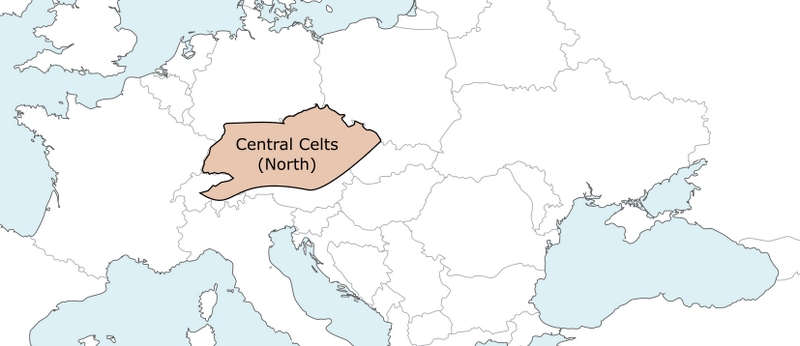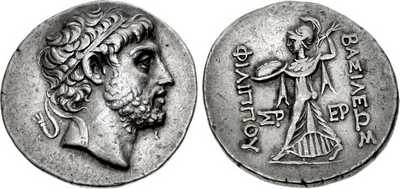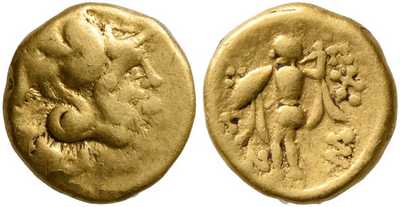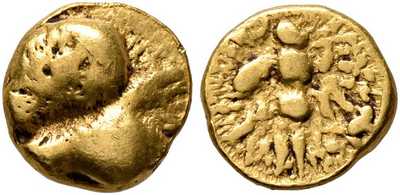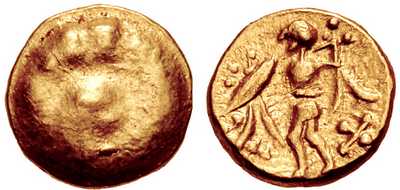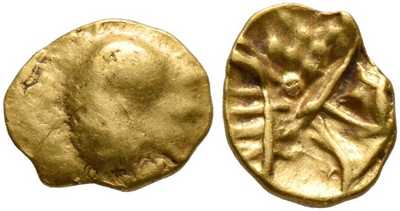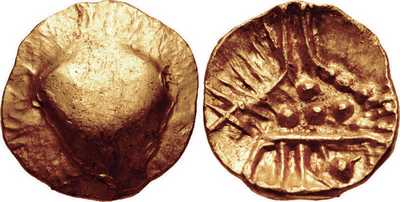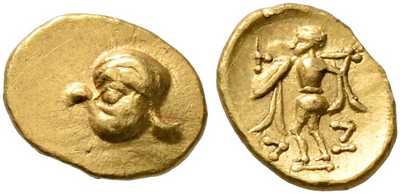| Back to Coins Derived from Alexander III and Philip III Tetradrachms | This page is part of the article Getting Started with Celtic Coins | Forward to The Celts from Northern Gaul |
The Boii were a major Celtic tribe based in the northern part of central Europe, most famously Bohemia (western Czech Republic) which is named after them. The Boii mainly minted in gold, and their most famous series of coins is the Athena-Alkis series. These were minted as staters, and 1/3, 1/8 and 1/24 fractions. Interestingly, it is these fractions that provide the best coins. All known staters are very poor quality, with only the hint of a design on either side, and with no decorations surrounding the figures. It is not clear why this is the case.
The fractions are stunning though, especially considering their size. The 1/3 staters are around 11-12mm, but the 1/8 are only 8mm-10mm and the 1/24 are a tiny 5mm-9mm with 7mm being the most common size.
| Stater 8.27g | |
| 1/3 stater 2.78g | |
| 1/8 stater 1.03g | |
| 1/24 stater 0.35g |
The reverse of the Athena-Alkis series is thought to be based on a silver tetradrachm of Antigonus II Gonatas (319–239 BC). The silver tetradrachm of his grandson, Philip V of Macedon (238-179 BC), is sometimes though to be the source coin, but the size of the shield, the width of the stance, and other small stylistic details err towards Antigonus. However, both coins would be known to the Celts, so it could be either or both.
Photo Copyright Classical Numismatic Group, LLC
Photo Copyright Classical Numismatic Group, LLC (16.75g)
The obverse varies between types. 1/3 and 1/8 staters use the head of Athena in a Corinthian helmet, while the 1/24 staters have a male head wearing a diadem.
Artistically, the 1/3, 1/8 and 1/24 staters progress in broadly the same way. They keep to the same imagery, but the quality decreases over time with the obverses degenerating sooner than the reverses. It’s only the tiny 1/24 staters that show any signs of abstraction and progression. Their reverse degenerates into almost nothing, and then gets reworked in stages into a well defined geometric pattern that bears no obvious resemblance to the original.
Staters
Photo Copyright Leu Numismatik AG (8.27g)
1/3 Staters
1/8 Stater
1/24 Staters
Nebenreihen Types
In addition to the main Athena-Alkis coins shown above, there are a small number of “Nebenreihen types” (secondary series) which are were minted early on, but didn’t continue. This suggests that there were perhaps several authorities issuing coins in the early days, but the one issuing the main Athena-Alkis coins shown above became dominant.
Photo Copyright Leu Numismatik AG (0.90g)
Photo Copyright Leu Numismatik AG (0.33g)
Further Reading
- “One Authority – One Idea – One Order. The Monetary System of the Amber Road as a Testimony of Greek Influence on Social and Economic Activities of central European Celts”, Tomáš Smělý
- “Die Goldpragung der Kelten in der Böhmischen Ländern” by Castelin Castelin
- “Die Munzpragungen der Boier” by Rudolf Paulsen
- “Kelten Geld: Münzen der Kelten und angrenzender nichtgriechischer Völkerschaften : Sammlung Christian Flesche” by Bernward Ziegaus
- “Kelten im Osten. Gold und Silber der Kelten in Mittel und Osteuropa. Sammlung Lanz” by Michaela Kostial
- “Münzen der Kelten (Sammlungskataloge des Kunsthistorischen Museums)” by Günther Dembski
Article Navigation
| Back to Coins Derived from Alexander III and Philip III Tetradrachms | Up to Some Celtic Coins and their Prototypes | Forward to The Celts from Northern Gaul |
